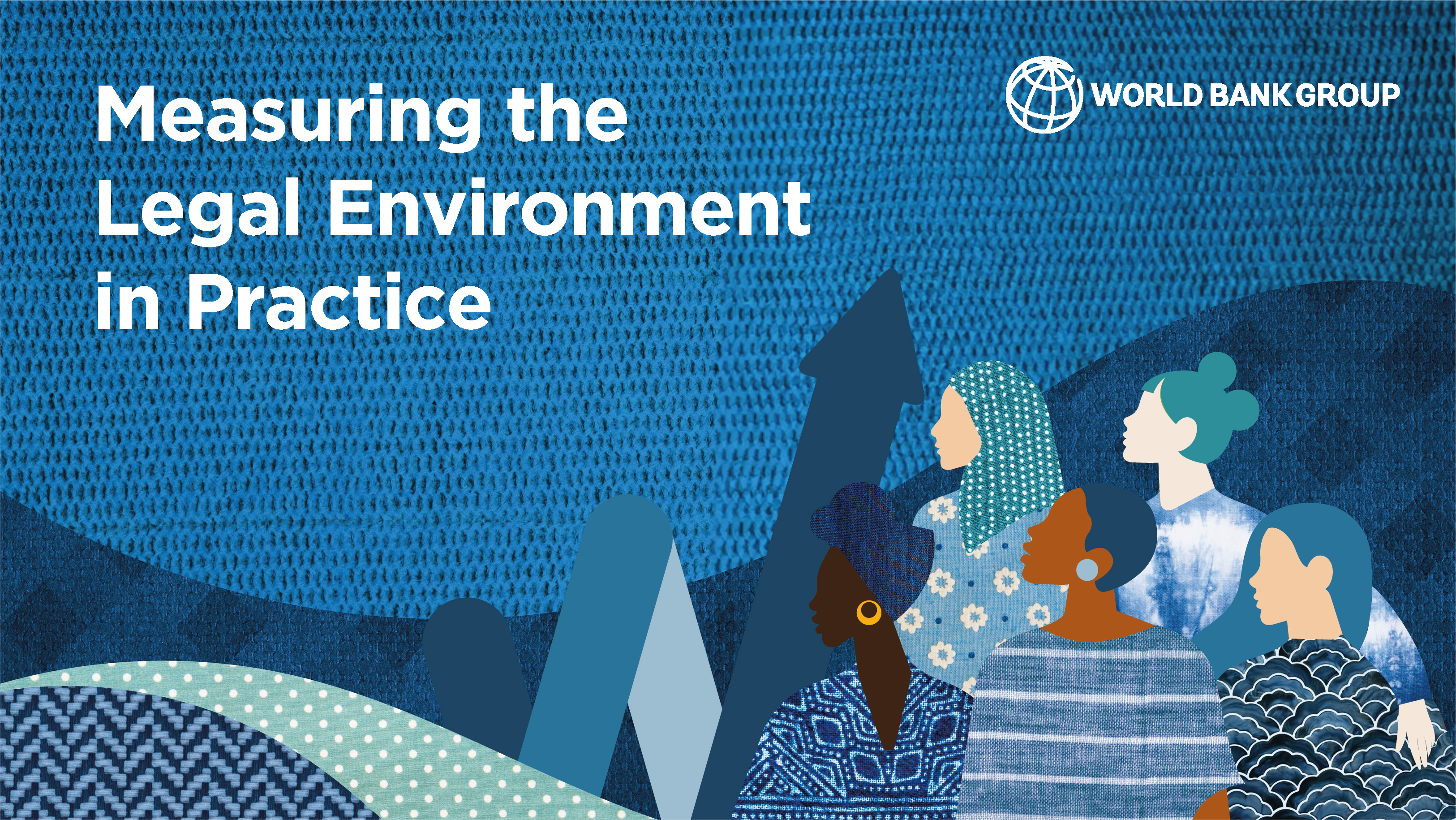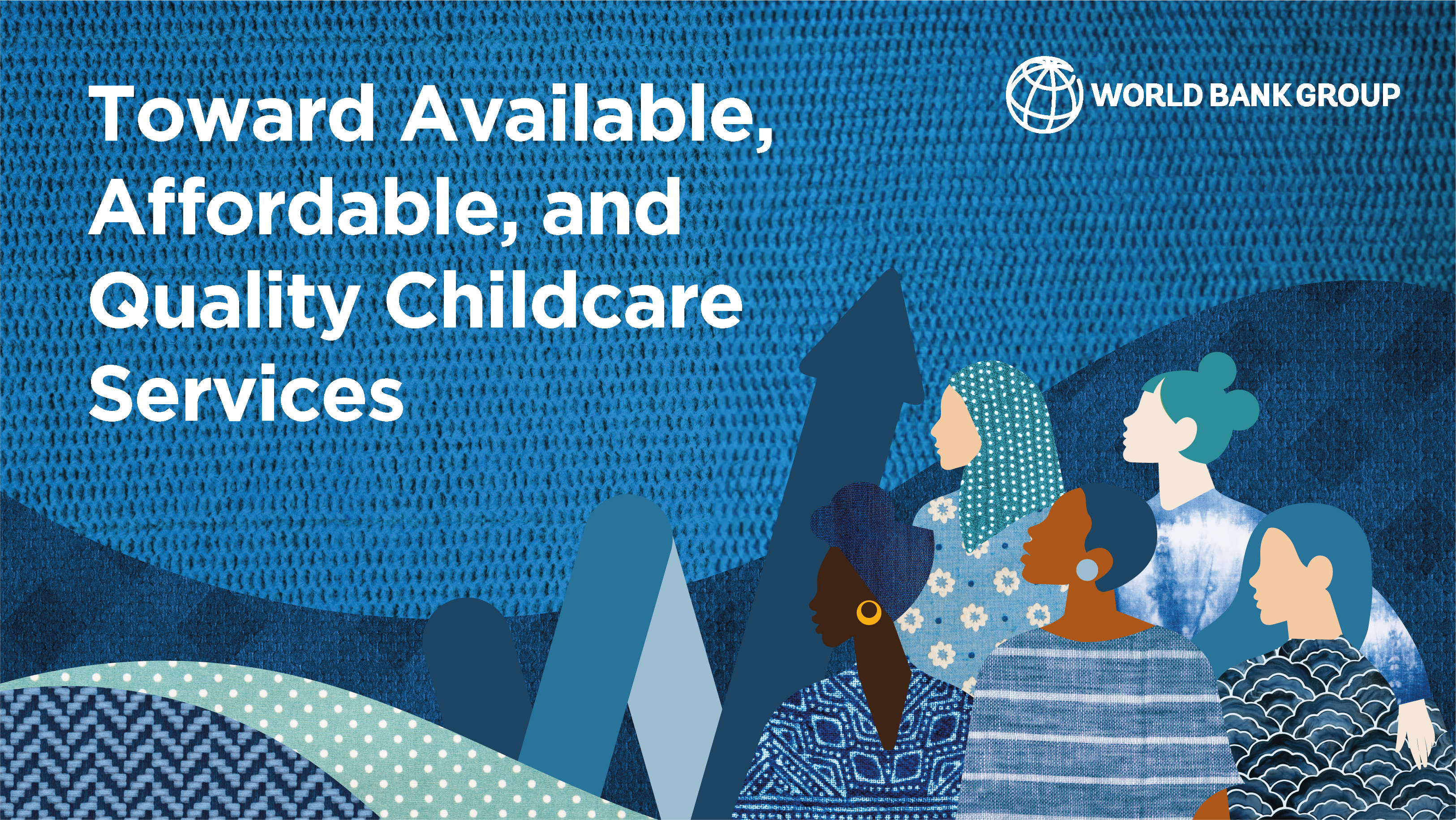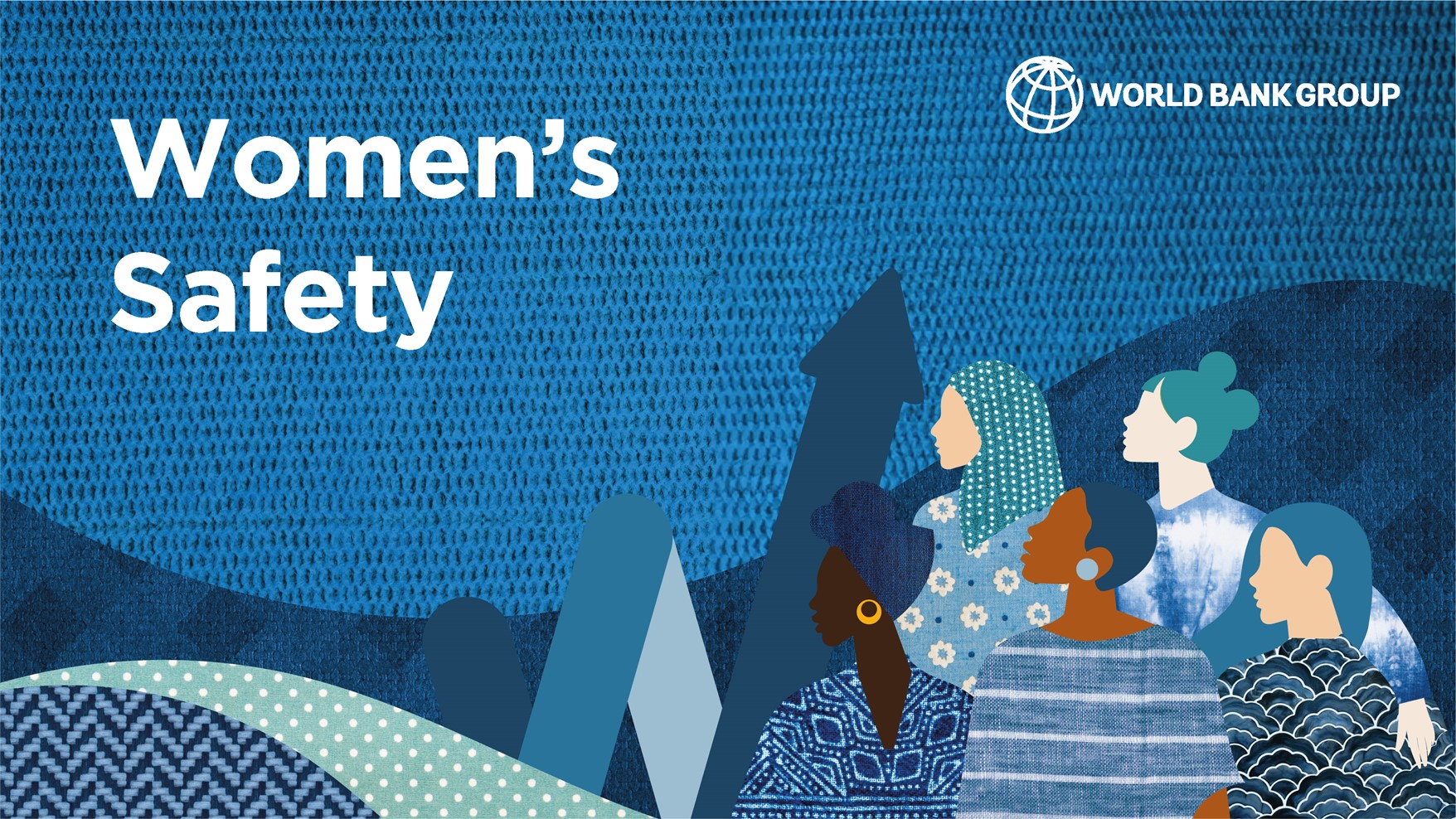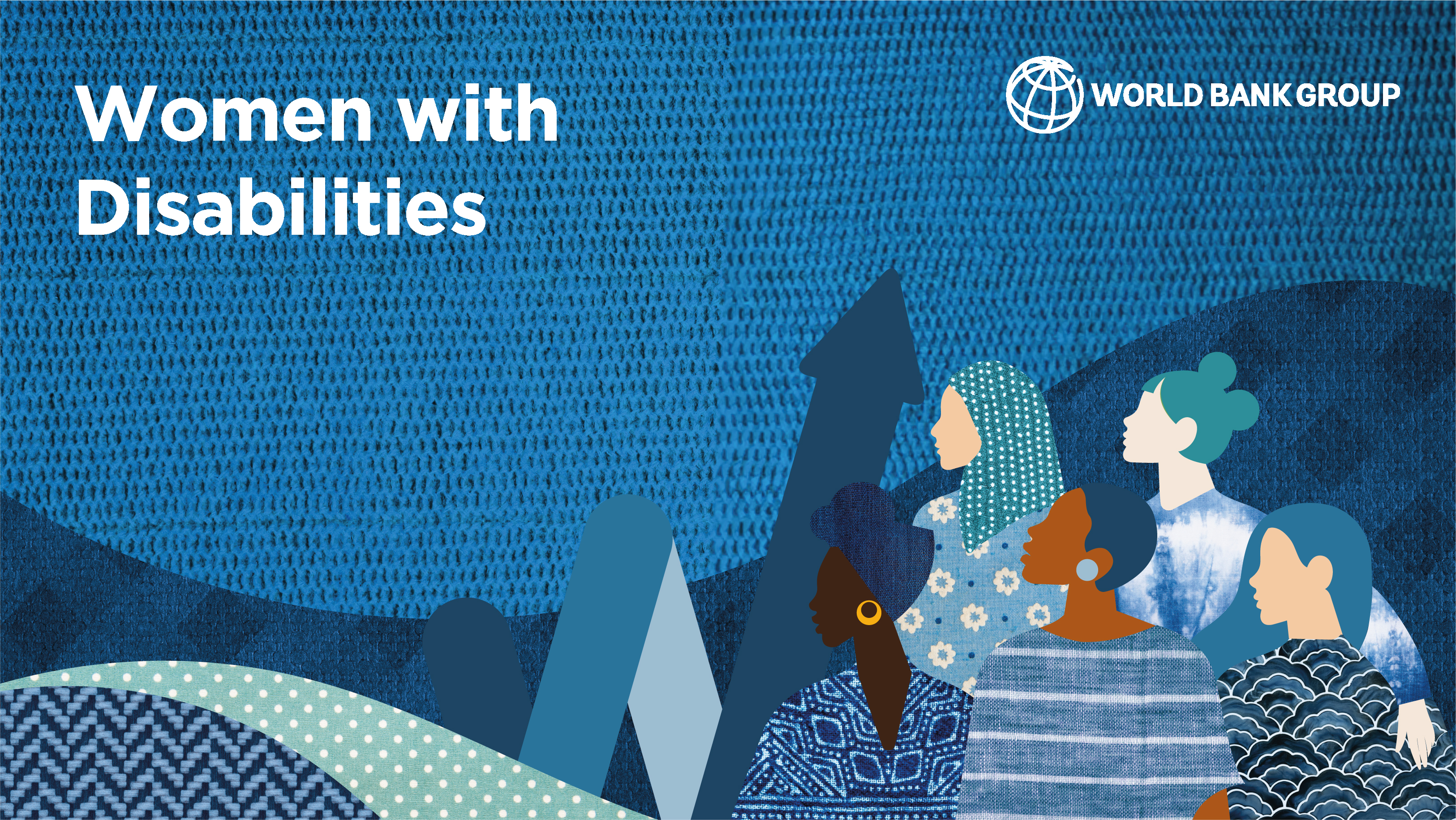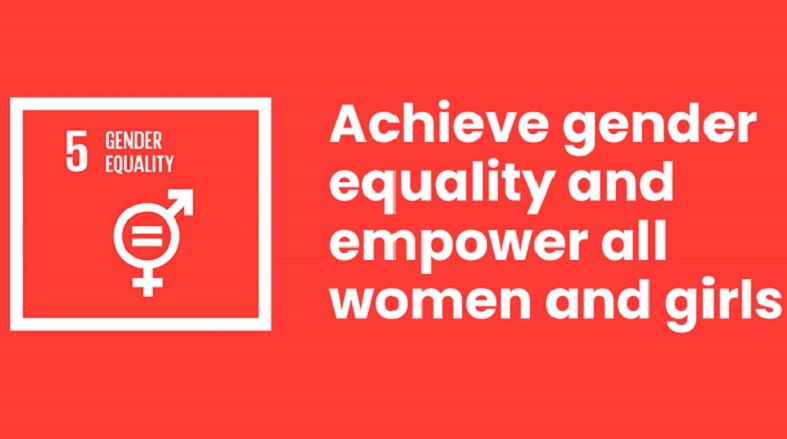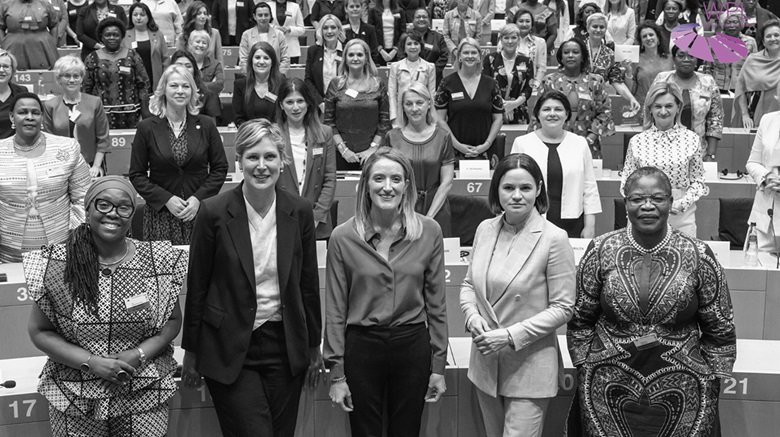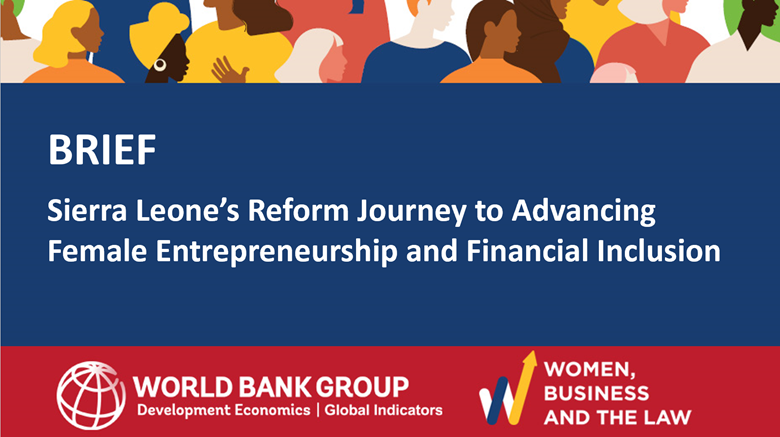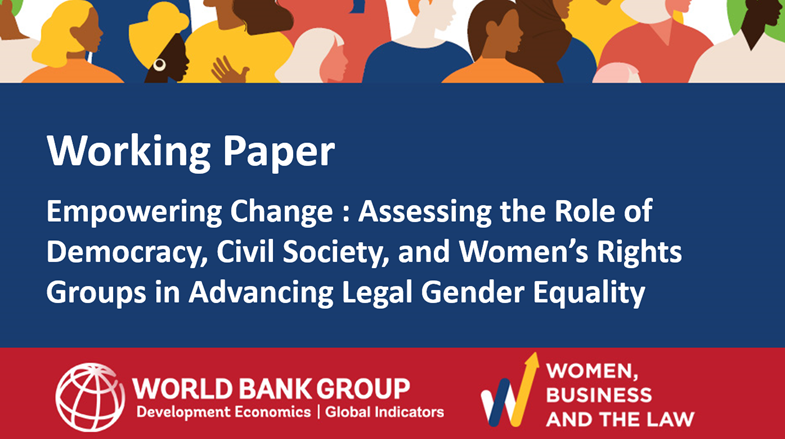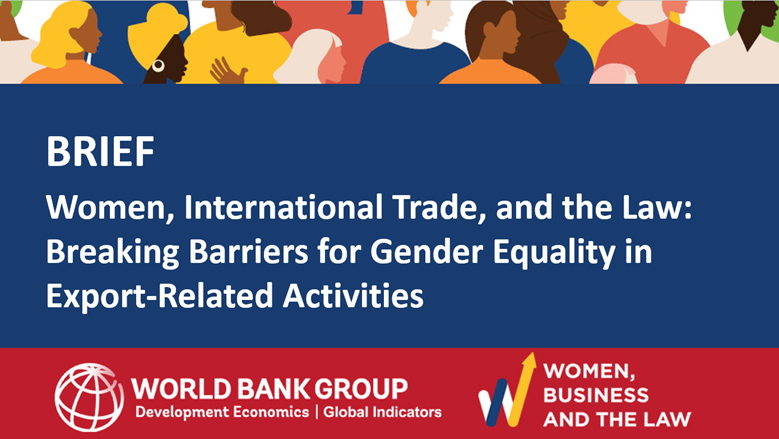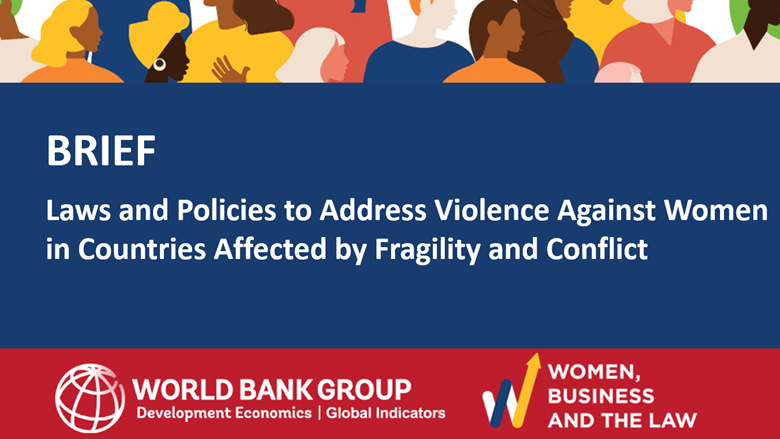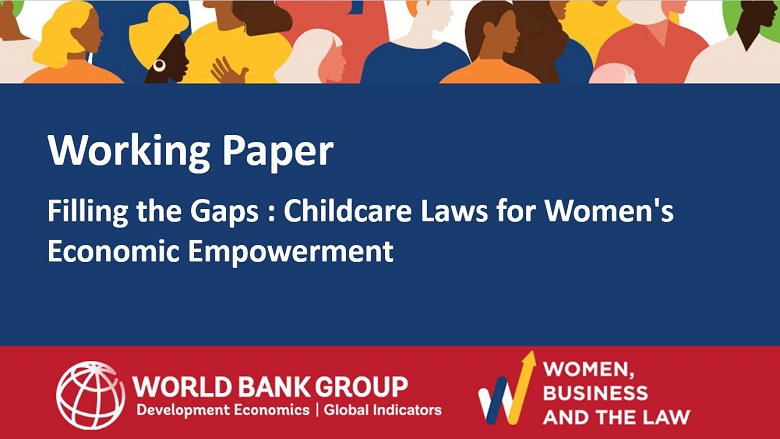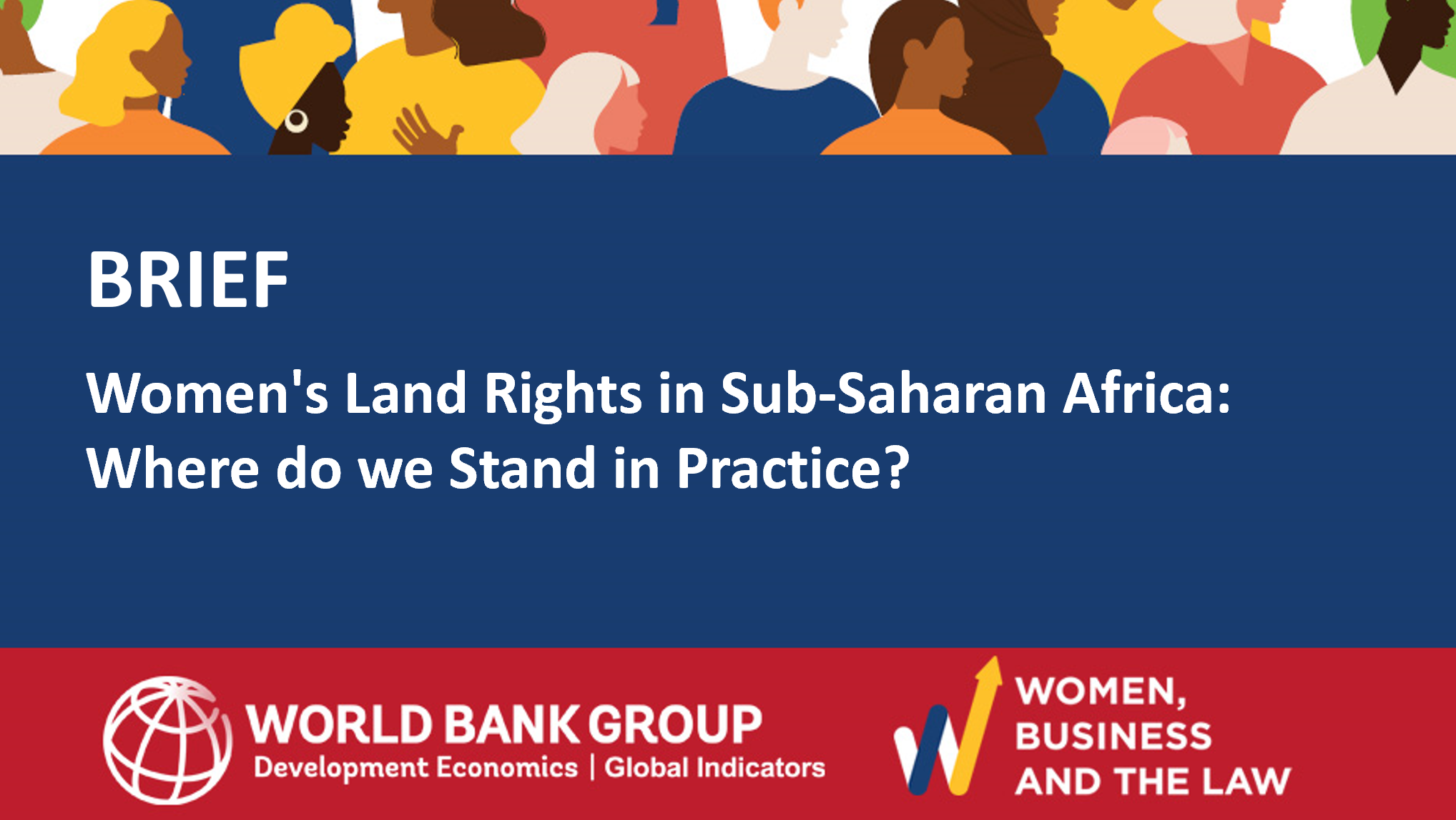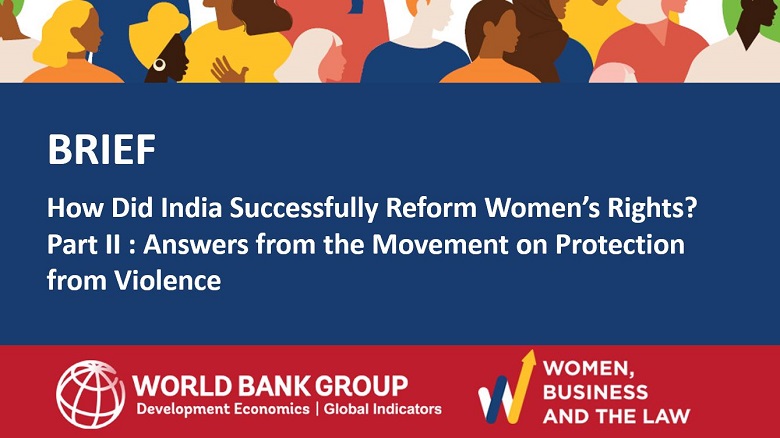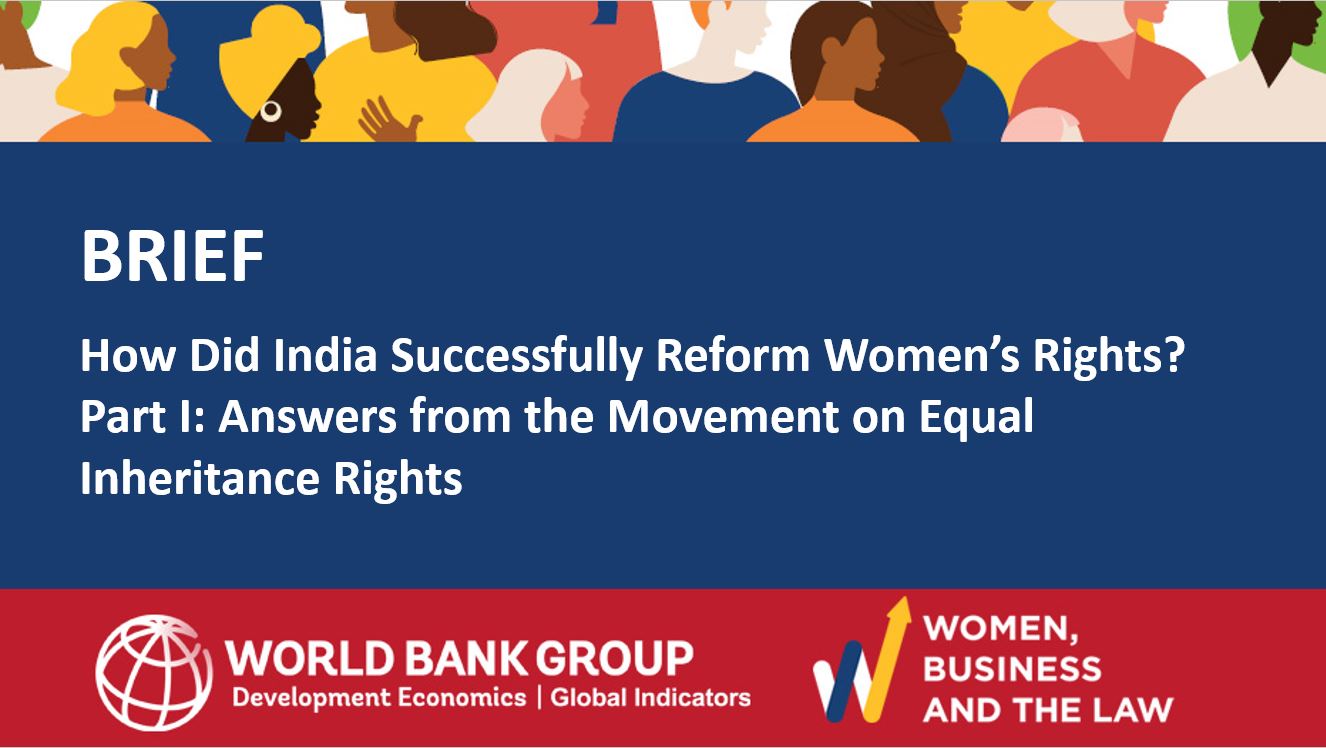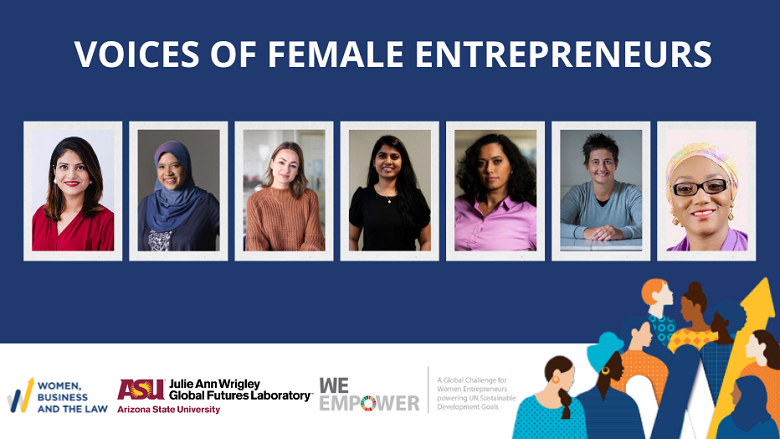Check out our new research areas, initiatives, collaborations, and recent publications.
Research and Initiatives
Areas of Research
Measuring the Legal Environment in Practice
Toward Available, Affordable, and Quality Childcare Services
Women's Safety
Women with Disabilities
Featured Initiatives and Publications
Browse Recent Publications
Publications on legal reforms and women’s rights
Temperature Anomalies as an Obstacle to Women’s Rights and Economic Empowerment? (Sep. 2025)
This paper analyzes historical temperature and precipitation fluctuations within countries to assess their effect on legal gender equality.
Empowering Change: Assessing the Role of Democracy, Civil Society, and Women’s Rights Groups in Advancing Legal Gender Equality (June 2024)
This paper explores the role that a country’s political economy, civil society organizations, and women’s rights groups play in advancing legal gender equality.
Accelerating Gender Equality Through Reforming Legal Frameworks (June 2023)
This thematic note emphasizes the role of laws and regulations in safeguarding women’s economic opportunities, for the purpose of informing the update of the World Bank Group’s Gender Strategy.
Gendered Laws (Dec. 2020)
This policy research working paper uses the 50 years of Women, Business and the Law data to chart the evolution of legal gender equality over time and to examine its relationship to women’s labor market outcomes.
Discriminatory Laws Against Women : A Survey of the Literature (Jan. 2019)
This policy research working paper reviews the empirical literature on the existence and impact of gender discriminatory laws on women's outcomes across various domains that constitute the Women, Business and the Law measure of gender inequality.
Unequal before the Law: Measuring Legal Gender Disparities across the World (Aug. 2016)
This study explores the degree of legal gender disparities across 167 economies around the world. A high degree of legal gender disparities is found to be negatively associated with a wide range of outcomes.
Women's Legal Rights over 50 years: Progress, Stagnation or Regression? (Sep. 2013)
Using a database of women’s property rights and legal capacity covering 100 countries over 50 years, this paper analyzes the triggers and barriers to reform. The database documents gender gaps in the ability to access and own assets, to sign legal documents in one’s own name, and to have equality or nondiscrimination as a guiding principle of the country’s constitution.
WBL 2024 Profile: East Asia and Pacific | Eastern & Southern Africa | Europe and Central Asia | Latin America & the Caribbean | Middle East & North Africa | OECD High Income | South Asia | Western & Central Africa
Gain insights into how laws and policies affect women's economic opportunities across regions. Each profile highlights key findings, reforms, and trends based on Women, Business and the Law 2024 data.
Unlocking Potential: Legal Pathways to Boost Women's Labor Force Participation in the Middle East and North Africa Region (June 2025)
The brief provides a comprehensive analysis of the legal and policy barriers affecting women's economic participationin the Middle East and North Africa (MENA) region.
Women's Rights in South Asia (Mar. 2022)
An overview of laws and regulations that advance women’s economic empowerment in South Asia. The profile identifies priority areas for legal reform and best practices from the region, based on Women, Business and the Law data.
Women’s Rights in Western and Central Africa (Mar. 2022)
An overview of laws and regulations that advance women’s economic empowerment in Western and Central Africa. The profile identifies priority areas for legal reform and best practices from the region, based on Women, Business and the Law data.
Women’s Rights in Eastern and Southern Africa (Mar. 2022)
An overview of laws and regulations that advance women’s economic empowerment in Eastern and Southern Africa. The profile identifies priority areas for legal reform and best practices from the region, based on Women, Business and the Law data.
Changing Laws, Changing Lives : Family Law Reform as a Catalyst for Economic Prosperity (Apr. 2025)
The brief underscores that family law is not solely private but a critical public concern with profound implications for women’s labor force participation and global economic growth.
Sierra Leone’s Reform Journey to Advancing Female Entrepreneurship and Financial Inclusion (Feb. 2025)
The Brief identifies the key drivers of reform: gender champions in government and political will, economic data and technical assistance from the international community, multistakeholder coalitions, as well as grassroots activity amplifying women’s voices and bridging the gap between civil society and lawmakers.
How Did India Successfully Reform Women’s Rights? Part I: Answers from the Movement on Equal Inheritance Rights (Jun. 2023)
This two-part policy brief series traces the development and reform of law in India related to three critical areas that affect women’s rights and economic opportunities: women’s property rights, domestic violence, and sexual harassment in the workplace. Part I: Answers from the Movement on Equal Inheritance Rights.
How Did India Successfully Reform Women’s Rights? Part II : Answers from the Movement on Protection from Violence (Jun. 2023)
This two-part policy brief series traces the development and reform of law in India related to three critical areas that affect women’s rights and economic opportunities: women’s property rights, domestic violence, and sexual harassment in the workplace. Part II: Answers from the Movement on Protection from Violence.
Legal Reforms to Protect Women at Home and at Work in São Tomé and Príncipe (English) (Oct. 2022)
This brief examines the introduction of landmark reforms in São Tomé and Príncipe to counter domestic and family violence and to protect women, both at home and at work.
Reformas legais para proteger as mulheres no lar e no trabalho em São Tomé e Príncipe (Portuguese) (Oct. 2022)
Este Resumo é uma análise sobre a introdução de reformas importantes em São Tomé e Príncipe para combater a violência doméstica e familiar, bem como proteger as mulheres, tanto em casa como no trabalho.
Reforming Discriminatory Laws to Empower Women in Togo (Sep. 2022)
This brief examines two reforms, enacted between 2012 and 2014, that lifted previous restrictions to women’s rights in Togo.
Pakistan Economy Summary (Jun. 2022)
A summary of laws and regulations that advance women’s economic empowerment in Pakistan. The summary identifies priority areas for legal reform based on Women, Business and the Law data and input from civil society organizations.
Key Ingredients to Women’s Legal Rights in Kenya (Mar. 2022)
This brief focuses on a series of reforms in Kenya, specifically, the adoption of the Sexual Offenses Act of 2006, the Employment Act of 2007, and the Protection Against Domestic Violence Act of 2015.
Reforms to Enhance Gender Equality in the Democratic Republic of Congo: From Advocacy to Implementation (Mar. 2022)
This brief examines two successful gender equality reforms in the Democratic Republic of Congo: the introduction of the Law on Parity in 2015 and an amendment to the Family Code in 2016.
India Economy Summary (Mar. 2022)
A summary of laws and regulations that advance women’s economic empowerment in India. The summary identifies priority areas for legal reform based on Women, Business and the Law data and input from civil society organizations.
Ethiopia Economy Summary (Jan. 2022)
A summary of laws and regulations that advance women’s economic empowerment in Ethiopia. The summary identifies priority areas for legal reform based on Women, Business and the Law data and input from civil society organizations.
Bangladesh Economy Summary (Nov. 2021)
A summary of laws and regulations that advance women’s economic empowerment in Bangladesh. The summary identifies priority areas for legal reform based on Women, Business and the Law data and input from civil society organizations.
Kenya Economy Summary (Nov. 2021)
A summary of laws and regulations that advance women’s economic empowerment in Kenya. The summary identifies priority areas for legal reform based on Women, Business and the Law data and input from civil society organizations.
Nigeria Economy Summary (Nov. 2021)
A summary of laws and regulations that advance women’s economic empowerment in Nigeria. The summary identifies priority areas for legal reform based on Women, Business and the Law data and input from civil society organizations.
Rwanda Economy Summary (Nov. 2021)
A summary of laws and regulations that advance women’s economic empowerment in Rwanda. The summary identifies priority areas for legal reform based on Women, Business and the Law data and input from civil society organizations.
Sri-Lanka Economy Summary (Nov. 2021)
A summary of laws and regulations that advance women’s economic empowerment in Sri Lanka. The summary identifies priority areas for legal reform based on Women, Business and the Law data and input from civil society organizations.
Challenging Entrenched Marital Power in South Africa (Oct. 2021)
This first in a series of Women, Business and the Law case studies examines more than three decades of reform toward removing the husband's marital power from South African legislation, offering important insights on optimal contexts for change and the role of women in ongoing advocacy efforts.
Women's Movements, Plural Legal Systems and the Botswana Constitution: How Reform Happens (Dec. 2013)
This paper explores the role that judges and national courts play in implementing gender equality principles and upholding state commitments to the Convention on the Elimination of Discrimination against Women.
Publications by topic
Laws and Policies to Address Violence Against Women in Countries Affected by Fragility and Conflict (Dec. 2023)
This Brief presents data on legal and supportive frameworks to curb domestic violence and sexual harassment in 55 countries, including 17 categorized as affected by fragility, conflict, and violence (FCV).
How Did India Successfully Reform Women’s Rights? Part II : Answers from the Movement on Protection from Violence (Jun. 2023)
This two-part policy brief series traces the development and reform of law in India related to three critical areas that affect women’s rights and economic opportunities: women’s property rights, domestic violence, and sexual harassment in the workplace. Part II: Answers from the Movement on Protection from Violence.
Protecting Women and Girls from Cyber Harassment : A Global Assessment of Existing Laws (Jun. 2023)
This Brief analyzes laws from 190 economies to assess the extent and coverage of current legislative safeguards women from cyber harassment, one of the many forms of cyber violence.
Absent laws and missing women: Can domestic violence legislation reduce female mortality? (Jun. 2021)
This study explores the relationship between the presence of domestic violence legislation and the adult mortality of women relative to men. Using a panel of 159 economies between 1990 and 2014, domestic violence legislation is found to be associated with a lower women-to-men adult mortality ratio. Jun-21
Compendium of International and National Legal Frameworks on Sexual Harassment in the Workplace (Dec. 2019)
Published by the World Bank Legal Vice Presidency in partnership with Women, Business and the Law and external consultants, the Compendium on International and National Legal Frameworks on Sexual Harassment in the Workplace provides a collection of international instruments that address the issue of sexual harassment in the workplace, and national legislation adopted to prevent and prosecute such cases.
Protecting Women from Violence - Bridging the Implementation Gap Between Law and Practice (Dec. 2019)
This topic note is a Women, Business and the Law pilot exercise that examines the legally-mandated access and existence of certain key support services in a set of 100 economies by collecting data covering 13 questions on regulation aimed at closing gaps between laws on the books and implementation.
Compendium of International and National Legal Frameworks on Domestic Violence (Jan. 2019)
Published by the World Bank Legal Vice Presidency in partnership with Women, Business and the Law and external consultants, the Compendium on International and National Legal Frameworks on Domestic Violence provides a survey of the key international and regional instruments as well as national legislation as they relate to domestic violence.
Ending Violence against Women and Girls (Feb. 2018)
Part of a series that assesses the role of laws and specific programs or interventions in ending violence against women and girls.
Child Marriage Laws and Their Limitations (Oct. 2017)
This brief summarizes findings from research undertaken by Save the Children and the World Bank on the lack of legal protection against child marriage for girls and marriages that take place below the national minimum age of marriage.
Closing the Gap: Improving Laws Protecting Women from Violence (Apr. 2015)
Violence against women and girls can take many forms, from marrying off a girl before she is developmentally ready to direct physical or sexual abuse by a partner. Whatever the form of violence, all limit a woman’s opportunities and restrict her full participation in and contribution to society.
Gendered Laws and Women in the Workforce (Dec. 2020)
This paper uses the World Bank’s newly constructed Women, Business and the Law 50-year database to provide the first global look at how gender discrimination by the law affects women’s economic opportunity and chart the evolution of legal inequalities over five decades.
Discriminatory Environment, Firms' Discriminatory Behavior, and Women's Employment in the Democratic Republic of Congo (Apr. 2020)
This paper contributes to better understanding firms' discriminatory behavior in the presence of gender-based legal discrimination and its linkages with labor market outcomes for women in a developing country setting.
Mapping the Legal Gender Gap in Getting a Job (Jan. 2012)
Women, Business and the Law’s getting a job indicator measures regulations affecting the formal private sector that differentiate between women and men that might affect women’s ability to get jobs. Some of these differentiations might help women work. Others might prevent it.
The Road to Reforming Ethiopia’s Policies on Maternity and Paternity Leave (May 2023)
This brief provides insight into how Ethiopia increased the duration of paid maternity leave from 90 to 120 days and introduced three days of paid paternity leave in 2019.
The Evolution of Maternity and Paternity Leave Policies over Five Decades: A Global Analysis (Oct. 2022)
This research analyzes the evolution of maternity and paternity leave across the world, covering 190 countries over 52 years. The data show striking differences both within and between countries in how leave distribution for parents upon the birth of a child has evolved.
Does Paternity Leave Matter for Female Employment in Developing Economies? (Mar. 2016)
Results from a sample of 53 developing countries show that women’s employment among private firms is significantly higher in countries that mandate paternity leave versus those that do not.
Filling the Gaps: Childcare Laws for Women's Economic Empowerment (May 2025)
This paper investigates the effects of legislation governing the availability, affordability, or quality of center-based childcare services on women's labor market outcomes around the world.
Government Financial Support for Childcare Services: A Study of Regulations in 95 Economies (Jul. 2023)
This brief presents new data collected by the World Bank’s Women, Business and the Law project on childcare legislation in 95 economies around the world. It focuses on government measures aimed at making childcare more affordable.
Filling the Gaps : Childcare Laws for Women's Economic Empowerment (Jun. 2023)
This paper aims to provide global evidence on whether and what attributes of laws governing the provision of childcare services affect women's labor market outcomes.
Toward Available, Affordable, and Quality Childcare in South Asia (Dec. 2022)
Recognizing that childcare services can have a positive impact on women’s economic inclusion, Women, Business and the Law presents a novel and comprehensive pilot dataset on regulatory frameworks around the availability, affordability, and quality of childcare services in 95 economies around the world. In South Asia, data was collected in six economies: Bangladesh; Bhutan; India; Nepal; Pakistan; and Sri Lanka.
Toward Available, Affordable, and Quality Childcare in the Middle East and North Africa (Dec. 2022)
This brief assesses the regulatory frameworks around childcare provision in 13 economies in the Middle East and North Africa: Algeria; Bahrain; Djibouti; Egypt, Arab Rep.; Iran, Islamic Rep.; Jordan; Kuwait; Malta; Morocco; Oman; Qatar; Tunisia; United Arab Emirates.
Toward Available, Affordable, and Quality Childcare in Eastern Europe and Central Asia (Dec. 2022)
This brief assesses the regulatory frameworks around childcare provision in 12 economies in Europe and Central Asia: Bulgaria; Croatia; Georgia; Kyrgyz Republic; Moldova; Romania; Russian Federation; Serbia; Tajikistan; Türkiye; Ukraine; and Uzbekistan.
Toward Available, Affordable, and Quality Childcare in Sub-Saharan Africa (Dec. 2022)
This brief assesses the regulatory frameworks around childcare provision for 21 economies in Sub-Saharan Africa: Angola; Botswana; Cabo Verde; Cote d’Ivoire; Ethiopia; Gabon; Ghana; Guinea; Kenya; Malawi; Mauritania; Mauritius; Namibia; Rwanda; Senegal; Sierra Leone; South Africa; Tanzania; Togo; Uganda; and Zambia.
Toward Available, Affordable, and Quality Childcare in Latin America and the Caribbean (Dec. 2022)
This brief assesses the regulatory frameworks around childcare provision for 17 economies in Latin America and the Caribbean: Argentina; Bahamas; the; Barbados; Belize; Bolivia; Brazil; Chile; Colombia; Ecuador; Mexico; Nicaragua; Panama; Paraguay; Peru; Puerto Rico (US); Suriname; Trinidad and Tobago.
Toward Available, Affordable, and Quality Childcare in East Asia and Pacific (Dec. 2022)
This brief assesses the regulatory frameworks around childcare provision for the ten economies in East Asia and Pacific: China; Fiji; Hong Kong SAR, China; Indonesia; Malaysia; Mongolia; Philippines; Singapore; Thailand; Vietnam.
Tackling Childcare (Jan. 2019)
This note showcases how different countries regulate private childcare services. It builds awareness of how quality childcare services are linked to women's economic empowerment and identifies areas for reform.
Emerging Trends in National Financial Inclusion Strategies that Support Women’s Entrepreneurship (Mar. 2023)
This brief presents data collected by the World Bank’s Women, Business and the Law (WBL) project on selected contours of National Financial Inclusion Strategies that can support women’s entrepreneurship.
Gendered Laws and Women’s Financial Inclusion (Jan. 2023)
This paper documents the relationship between legal gender equality and the use of financial services, using individual-level data from 148 developed and developing economies. The analysis, which combines data from the Global Findex and Women, Business and the Law databases, highlights the existence of a significant and positive correlation between gender equality in the law and women’s access to financial products.
Gendered Laws, Informal Origins, and Subsequent Performance (Aug. 2021)
This research explores the relationship between laws that discriminate on the basis of gender and the probability that a female-owned business begins operating in the informal sector. This is achieved by tracing the origins of formal businesses surveyed in the World Bank Enterprise Surveys and merging this with information on the level of legal equality between genders as measured by the Women, Business and the Law database.
Women's Financial Inclusion and the Law (Apr. 2018)
A case study examining how discriminatory laws can affect women's demand for financial services.
Mapping the Legal Gender Gap in Accessing Business Environment Institutions (Jan. 2012)
In addition to the challenges that all entrepreneurs face in starting businesses, female entrepreneurs can face challenges in meeting the legal prerequisites before business registration. Jan-12
Women's Land Rights in Sub-Saharan Africa : Where do we Stand in Practice? (Nov. 2023)
This Brief examines the challenges in implementing laws protecting women’s land rights in Sub-Saharan Africa. While some progress has been made in enacting legal protections, remaining discriminatory legislation, weak enforcement mechanisms, and conflicting rules and norms, notably, those embedded in customary land tenure practices, continue to limit women’s rights to land in practice, perpetuating gender inequalities.
How Did India Successfully Reform Women’s Rights? Part I: Answers from the Movement on Equal Inheritance Rights (Jun. 2023)
This two-part policy brief series traces the development and reform of law in India related to three critical areas that affect women’s rights and economic opportunities: women’s property rights, domestic violence, and sexual harassment in the workplace. Part I: Answers from the Movement on Equal Inheritance Rights.
Mapping the Legal Gender Gap in Using Property & Building Credit (Jan. 2013)
When seeking a loan, women and men can encounter many obstacles when they do not possess the right types of assets to pledge as collateral. Two of the indicators examine some of the legal and regulatory prerequisites needed to access and leverage property as collateral and to build credit histories.
Saving for Old Age (Mar. 2017)
Differences women face in their working lives relative to men can result in unequal economic outcomes in retirement. This case study examines the gender gap in access to pensions.
Safeguarding the Rights of Women with Disabilities to Family Life, Work, and Protection from Gender-based Violence (Dec. 2022)
This brief analyzes legal and policy data from 190 economies on the rights of women with disabilities and highlights promising practices where laws directly recognize and protect these needs, with the goal of informing policy reforms across the globe.
The Importance of Designing Gender and Disability Inclusive Laws: A Survey of Legislation in 190 Economies (Sep. 2022)
This Brief presents data collected by the World Bank’s Women, Business, and the Law project on the legal barriers that women with disabilities face when accessing economic opportunities in 190 economies. The new data suggest that only one-quarter of economies worldwide explicitly protect and promote the rights of women with disabilities.
The Rights of Women with Disabilities (Nov. 2020)
This topic note showcases the results of a pilot research on the legal rights of women with disabilities in 176 economies as part of the 10 Commitments on Disability-Inclusive Development. The research was developed with the support of the World Bank's Environmental and Social Framework Implementation Support Unit (ESF ISU). Nov-20
Women, International Trade, and the Law: Breaking Barriers for Gender Equality in Export-Related Activities (Mar. 2024)
This Brief analyzes women’s participation in international trade and impediments to gender equality in national laws measured in the Women, Business and the Law index.
